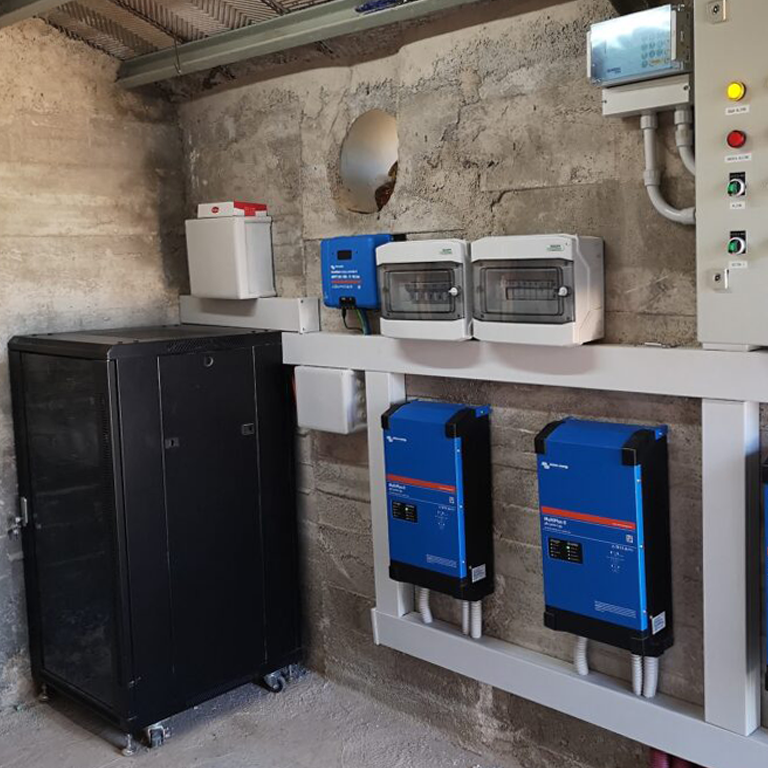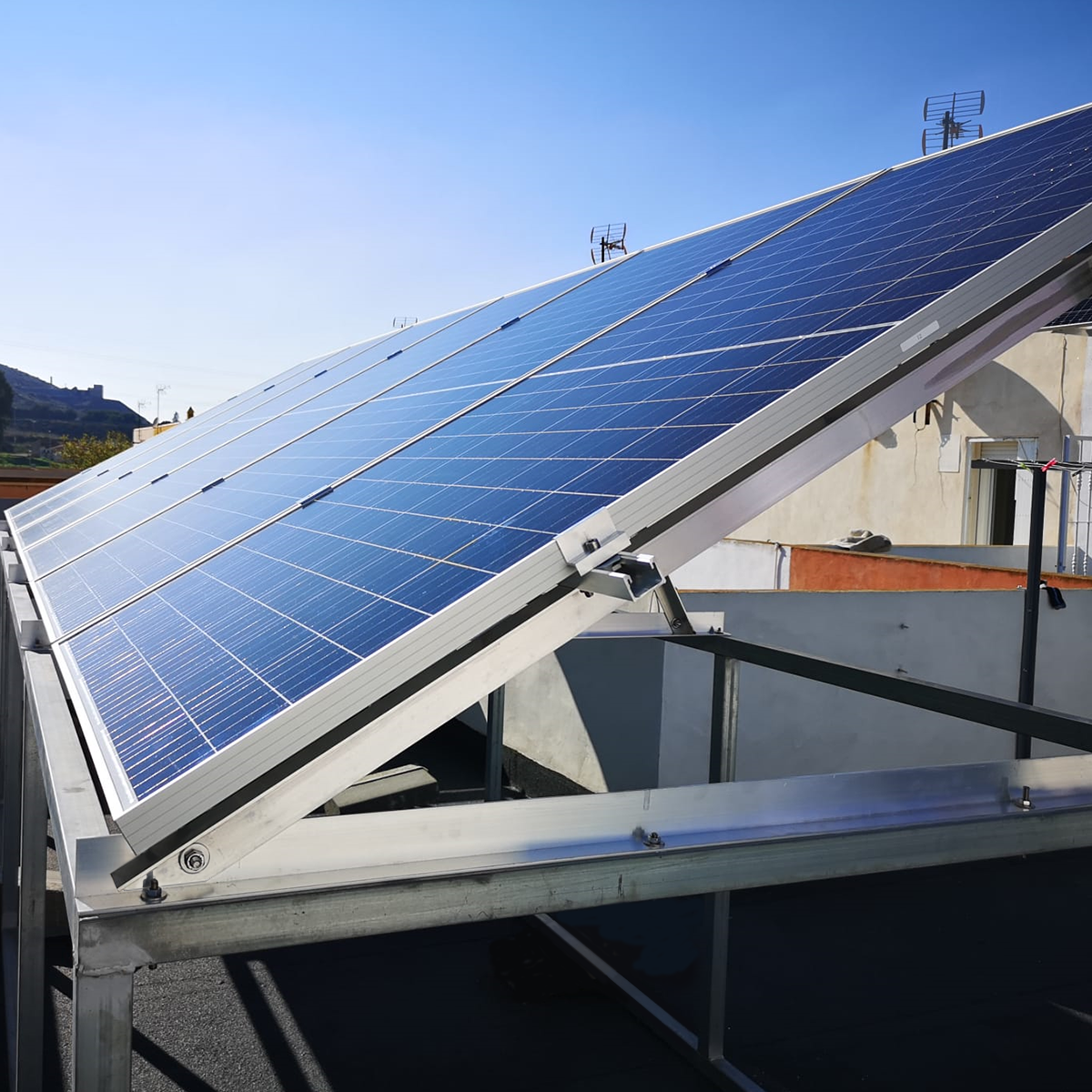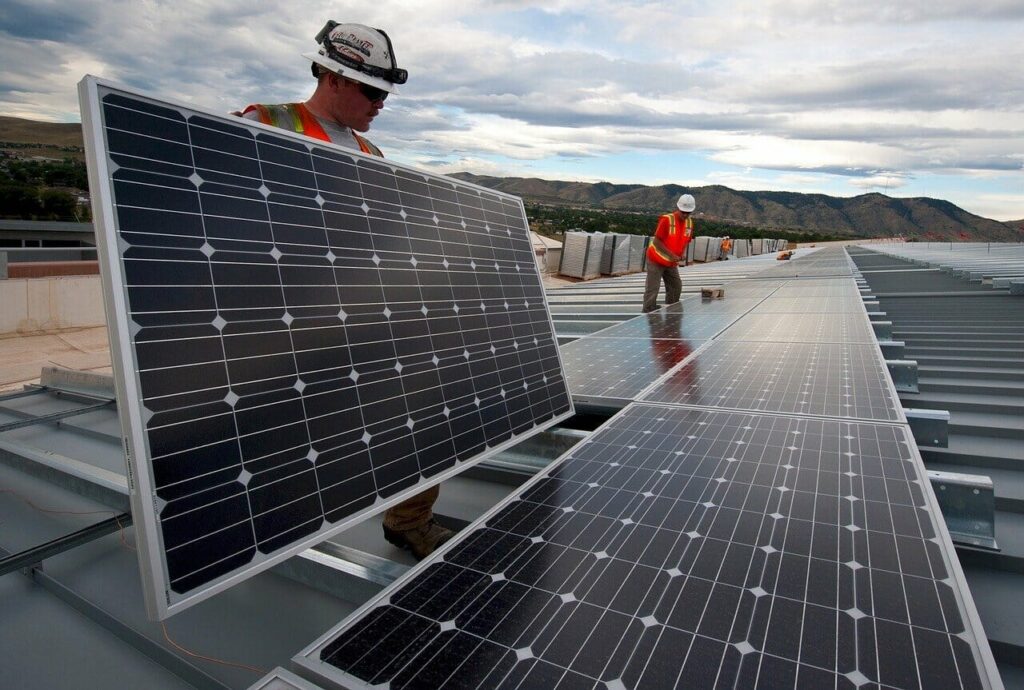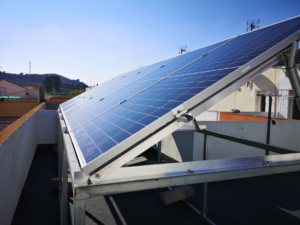Tipos de instalaciones fotovoltaicas: aisladas y conectadas a red.
En el artículo de hoy vamos a ver los diferentes tipos de instalaciones fotovoltaicas que existen y en qué se diferencian para que puedas elegir la que mejor se adapte a tus necesidades y circunstancias. Es importante que conozcas estas diferencias para que puedas tomar las decisiones correctas a la hora de instalar paneles solares.
Existen dos grandes grupos en los que clasificar las instalaciones solares: Las instalaciones aisladas, que son las que están desconectadas totalmente de la red eléctrica y dedican toda la energía generada en los paneles al autoconsumo y las instalaciones conectadas a red, que siguen conectadas y pueden coger energía de la red en momentos puntuales si la producción no es suficiente o volcar a la red los excedentes de energía cuando esta no se consuma.
También es importante que sepas lo que es un kit fotovoltaico. Un kit solar es el conjunto de todos los componentes que permiten que una instalación fotovoltaica funcione como generador de energía. Existen muchas configuraciones para estos kits dependiendo de cada caso, pero siempre hay unos elementos comunes a todas las instalaciones: los paneles solares, el inversor solar y, en el caso de las instalaciones aisladas, las baterías y el regulador de carga.
¿Qué es una instalación solar aislada?

Son las instalaciones que están desconectadas de la red. Pueden ser instalaciones que estén en localidades demasiado apartadas o que no tengan acceso a la red eléctrica pública por otras razones. Instalaciones rurales como casas de campo, granjas u hoteles rurales; sistemas de iluminación de áreas aisladas; casetas y antenas de telecomunicaciones, balizas o boyas de señalización o instalaciones de bombeo de agua serían ejemplos de instalaciones aisladas. Pueden ser instalaciones en las que los propietarios hayan decidido desconectarse de la red por voluntad propia y dedicar toda la producción de sus paneles al autoconsumo, de forma que ya no dependerán de las compañías eléctricas para su día a día.
Este tipo de instalaciones siempre incluye baterías para que la energía generada durante el día pueda almacenarse y utilizarse durante la noche o en días nublados.
Puedes ver un ejemplo aquí: Instalación aislada para cabezal de riego
¿Qué es una instalación solar conectada a red?

Son las instalaciones que siguen conectadas a la red eléctrica, también llamadas de autoconsumo directo. Estas instalaciones utilizan la red eléctrica para coger energía cuando la producción de las placas no es suficiente o para volcar los excedentes cuando los paneles generan más energía de la que se consume. Son las instalaciones más habituales para viviendas, comunidades y empresas y el modelo que utilizan los grandes parques solares para vender la energía que producen en sus panales.
Puedes ver un ejemplo aquí: Instalación conectada a red para autoconsumo en Alumbres
Diferencias entre las instalaciones aisladas y las instalaciones conectadas a red
La principal diferencia es que las instalaciones conectadas a red siguen conectadas a la red eléctrica pública y pueden coger o volcar energía en ella y las aisladas no. La otra gran diferencia son los elementos que necesitan. Los kits solares para instalaciones conectadas a red necesitan un inversor que convierta la corriente continua que generan las placas en corriente alterna de consumo diario y un contador que mida la potencia generada, la consumida y la sobrante. Las instalaciones aisladas necesitan, aparte del inversor y el contador, baterías para acumular la energía de los paneles y un regulador para controlar el estado de carga y garantizar que los ciclos se hacen de la manera más eficiente posible para alargar la vida del sistema.
¿Cuánto cuesta una instalación fotovoltaica?
La respuesta corta es que depende de la potencia que vayas a consumir y del tipo de instalación que hagas. No debes medir el coste de una instalación de autoconsumo por la inversión inicial que vayas a hacer, sino por el ahorro en el consumo de energía que te va a suponer. Actualmente, gracias a los avances en materiales y tecnología, una instalación fotovoltaica media se amortiza en poco menos de 7 años. Pasado ese tiempo, todo es ahorro. En una instalación estándar para una vivienda con un consumo medio podrías llegar a ahorrarte hasta un 80% de la factura de la luz estando conectado a la red.
Y ahora que ya conoces los diferentes tipos de instalaciones fotovoltaicas… ¡Pásate al autoconsumo con la instalación que mejor se adapte a tu proyecto!
¡Podemos ayudarte!
Si te pica el gusanillo y quieres pasarte al autoconsumo, pero aún te quedan dudas, ¡Contacta con nosotros! Nuestro equipo profesional, que también es servicio oficial de dos de las marcas punteras en energía solar del mundo, Fronius y Victron, tiene más de una década de experiencia en el sector con cientos de instalaciones a sus espaldas. Y si ya tienes una idea, pero necesitas llevarla a cabo, ¡Pídenos presupuesto!





